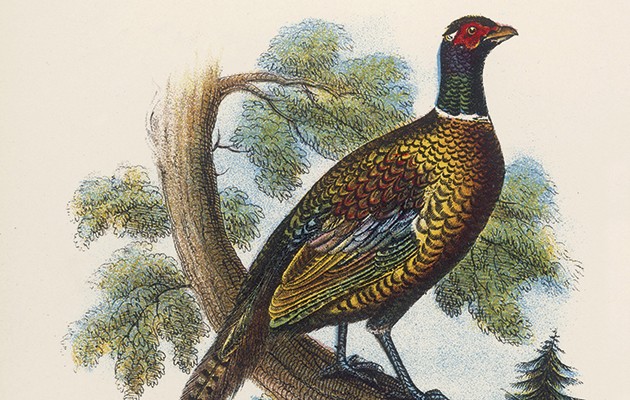Orginially brought to England by the Romans, the Caucasian pheasant is also known as the Old English Blackneck, but finding a pure-bred one is no easy feat
The Caucasian pheasant was originally brought to England by the Romans, but a long history hasn’t saved their ever declining numbers. Finding a pure Caucasian pheasant is very rare, and while you can buy the birds from game farms they are usually cross-breeds. The World Pheasant Association (WPA) are part of critical work to save the bird.
Do you know your pheasant history? Read the history of the pheasant to learn more about what you’re shooting in the field and impress your guests at the shoot lunch with your knowledge. Or, for some inspiration on what to do with a particuarly large bag, look at the top 10 best pheasant recipes for game ideas fit for every occassion.
CAUCASIAN PHEASANT
The Caucasian pheasant was originally brought from Turkey to England by the Romans, and is known to shooters as the Old English Black-necked Pheasant. It has a reputation for staying where it is released, tolerating shooting pressure and disturbance, although it is a reluctant flier.
You can buy Old English Blacknecks from game farms, usually cross-breeds rather than genetically pure examples of the sub-species. It is rare to find pure Caucasian pheasants in the wild, as they readily interbreed with common ringneck pheasants and the blue-back and green-cross birds released for sport.
The WPA was excited to discover a small remnant population of pure Black-necked pheasants in the Nestos region in the far north of Greece. This bird is critically endangered, with an estimated population of just 100 to 250. Even those are threatened by habitat loss, disturbance by farming and forestry operations and predation.
The local hunters’ federation took up the cause and, with WPA support, is preparing a conservation plan to save the bird, taking specialist advice from Dr Roger Draycott of the Game and Wildlife Conservation Trust whose initial fact-finding visit to the region in May 2015 was funded by WPA.





